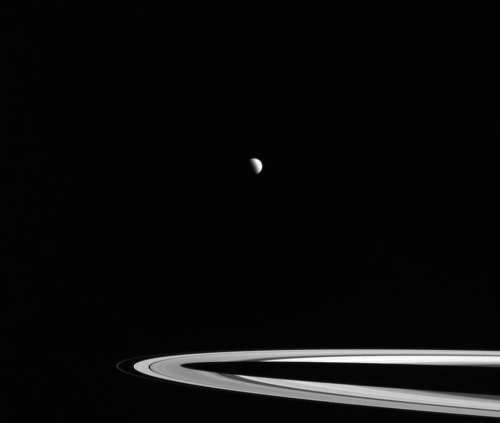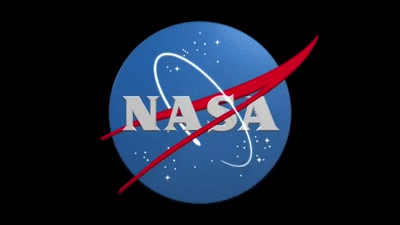Lanas-own-blog - My Personal Space.

More Posts from Lanas-own-blog and Others


Is it too late to jump on the pumpkin-everything bandwagon?
Select pumpkin images from our Seed Catalogs collection


NGC 3324.
Credit: NASA, ESA and the Hubble Heritage Team (STScI/AURA)
The Martian Movie and Our Real Journey to Mars
The Martian movie is set 20 years in the future, but here at NASA we are already developing many of the technologies that appear in the film. The movie takes the work we’re doing and extends it into fiction set in the 2030s, when NASA astronauts are regularly traveling to Mars and living on the surface. Here are a few ways The Martian movie compares to what we’re really doing on our journey to Mars:
Analog Missions

MOVIE: In the film, Astronaut Mark Watney is stranded on the Red Planet.
REALITY: In preparation for sending humans to Mars, we have completed one of the most extensive isolation missions in Hawaii, known as HI-SEAS. The goal of this study was to see how isolation and the lack of privacy in a small group affects social aspects of would-be explorers. The most recent simulation was eight months long, and the next mission is planned to last a year.
Spaceport

MOVIE: The Martian movie launches astronauts on the Aries missions from a refurbished and state of the art space center.
REALITY: Currently, the Ground Systems Development and Operations’ primary objective is to prepare the center to process and launch the next-generation vehicles and spacecraft designed to achieve our goals for space exploration. We are not only working to develop new systems, but also refurbishing and upgrading infrastructure to meet future demands.
Deep Space Propulsion

MOVIE: In the film, the astronauts depart the Red Planet using a propulsion system know as the Mars Ascent Vehicle (MAV).
REALITY: We are currently developing the most powerful rocket we’ve ever built, our Space Launch System (SLS). Once complete, this system will enable astronauts to travel deeper into the solar system than ever before! The RS-25 engines that will be used on the SLS, were previously utilized as the main engine on our space shuttles. These engines have proven their reliability and are currently being refurbished with updated and improved technology for our journey to Mars.
Mission Control

MOVIE: In the movie, Mission Control operations support the Aries 3 crew.
REALITY: On our real journey to Mars, Mission Control in Houston will support our Orion spacecraft and the crew onboard as they travel into deep space.
Habitat

MOVIE: The artificial living habitat on Mars in The Martian movie is constructed of industrial canvas and contains an array of life support systems.
REALITY: The Human Exploration Research Analog (HERA), formerly known as the Deep Space Habitat, is a three-story module that was designed and created through a series of university competitions. Studies conducted in habitat mockups will allow us to evolve this technology to create a reliable structures for use on Mars.
Rover

MOVIE: The characters in the film are able to cruise around the Red Planet inside the Mars Decent Vehicle (MDV).
REALITY: We are currently developing a next generation vehicle for space exploration. Our Mars Exploration Vehicle (MEV) is designed to be flexible depending on the destination. It will have a pressurized cabin, ability to house two astronauts for up to 14 days and will be about the size of a pickup truck.
Harvest

MOVIE: Astronaut Mark Watney grows potatoes on Mars in The Martian movie.
REALITY: We’re already growing and harvesting lettuce on the International Space Station in preparation for deep space exploration. Growing fresh food in space will provide future pioneers with a sustainable food supplement, and could also be used for recreational gardening during deep space missions.
Spacesuit

MOVIE: The spacesuit worn by astronauts in the film allows them to work and function on the surface of Mars, while protecting them from the harsh environment.
REALITY: Prototypes of our Z-2 Exploration Suit are helping to develop the technologies astronauts will use to live and work on the the Martian surface. Technology advances in this next generation spacesuit would shorten preparation time, improve safety and boost astronaut capabilities during spacewalks and surface activities.

Orions Belt and Sword over Teides Peak : The southern part of Orion, the famous constellation and mythical hunter, appears quite picturesque posing here over a famous volcano. Located in the Canary Islands off the northwest coast of Africa, the snow-peaked Teide is one of the largest volcanoes on Earth. Lights from a group planning to summit Teide before dawn are visible below the volcanos peak. In this composite of exposures taken from the same location one night last month, the three iconic belt stars of Orion are seen just above the peak, while the famous Orion Nebula and the rest of Orions sword are visible beyond the volcanos left slope. Also visible in the long duration sky image are the Horsehead Nebula, seen as a dark indentation on the red emission nebula to the belts left, and the Flame Nebula, evident just above and to the right of the Horsehead. via NASA
js


Titan with the rings of Saturn.

The NASA “Worm” Logo
Just like many organizations, the style and logos can change over time. You are probably most familiar with our “meatball” logo. No, unfortunately this does not refer to the delicious food. This logo (below) is our most popular symbol, and dates back to 1959.

But, we’ve also had other insignia that represented our organization throughout the years.
The “worm” logo (below) was used by the agency from 1975 until 1992. The organization wanted to create a more “modern” logo, which resulted in the unique type style of the “worm” logo.

Even though this logo was retired in 1992, the Graphics Standards Manual is still available online HERE.
You can also read up about the emblems, logos and insignia used by NASA throughout the years in a new e-Book available for free HERE.
Make sure to follow us on Tumblr for your regular dose of space:http://nasa.tumblr.com

-
 lanas-own-blog reblogged this · 7 years ago
lanas-own-blog reblogged this · 7 years ago -
 breonnaleona reblogged this · 8 years ago
breonnaleona reblogged this · 8 years ago -
 breonnaleona liked this · 8 years ago
breonnaleona liked this · 8 years ago -
 sensual-killer15 liked this · 8 years ago
sensual-killer15 liked this · 8 years ago -
 serotoninsiren reblogged this · 8 years ago
serotoninsiren reblogged this · 8 years ago -
 amyvi liked this · 8 years ago
amyvi liked this · 8 years ago -
 pisceslalle-blog liked this · 9 years ago
pisceslalle-blog liked this · 9 years ago -
 sarkilarinoyunu liked this · 9 years ago
sarkilarinoyunu liked this · 9 years ago -
 evekittyeve reblogged this · 9 years ago
evekittyeve reblogged this · 9 years ago -
 katanaxd liked this · 9 years ago
katanaxd liked this · 9 years ago -
 pretthings reblogged this · 9 years ago
pretthings reblogged this · 9 years ago -
 zhaniik reblogged this · 9 years ago
zhaniik reblogged this · 9 years ago -
 batsthefreakmunson reblogged this · 9 years ago
batsthefreakmunson reblogged this · 9 years ago -
 comp-any liked this · 9 years ago
comp-any liked this · 9 years ago -
 peppypear reblogged this · 9 years ago
peppypear reblogged this · 9 years ago -
 cesarivra liked this · 9 years ago
cesarivra liked this · 9 years ago -
 fuckmeinmylouboutins reblogged this · 9 years ago
fuckmeinmylouboutins reblogged this · 9 years ago -
 mainlame liked this · 9 years ago
mainlame liked this · 9 years ago -
 loudmusicfreshveggiez reblogged this · 9 years ago
loudmusicfreshveggiez reblogged this · 9 years ago -
 keep-you-safe-and-inspired reblogged this · 9 years ago
keep-you-safe-and-inspired reblogged this · 9 years ago -
 darkpsychartist liked this · 9 years ago
darkpsychartist liked this · 9 years ago -
 xrymws liked this · 9 years ago
xrymws liked this · 9 years ago -
 littlekittenowned-blog liked this · 9 years ago
littlekittenowned-blog liked this · 9 years ago -
 highh-5 liked this · 9 years ago
highh-5 liked this · 9 years ago -
 wedespisethis-blog reblogged this · 9 years ago
wedespisethis-blog reblogged this · 9 years ago -
 zanger1999 reblogged this · 9 years ago
zanger1999 reblogged this · 9 years ago -
 oikawa-and-thediamonds reblogged this · 9 years ago
oikawa-and-thediamonds reblogged this · 9 years ago -
 oikawa-and-thediamonds liked this · 9 years ago
oikawa-and-thediamonds liked this · 9 years ago -
 silvergirly reblogged this · 9 years ago
silvergirly reblogged this · 9 years ago -
 marxogaasen reblogged this · 9 years ago
marxogaasen reblogged this · 9 years ago -
 slaughterd0ll-blog1 liked this · 9 years ago
slaughterd0ll-blog1 liked this · 9 years ago -
 queen-420-bitch reblogged this · 9 years ago
queen-420-bitch reblogged this · 9 years ago -
 rottingbluebird reblogged this · 9 years ago
rottingbluebird reblogged this · 9 years ago -
 z3r0-c001 reblogged this · 9 years ago
z3r0-c001 reblogged this · 9 years ago -
 pyxs1s reblogged this · 9 years ago
pyxs1s reblogged this · 9 years ago
I've had lots of blogs in the past, but this one I'm actualy excited to share with people.
68 posts